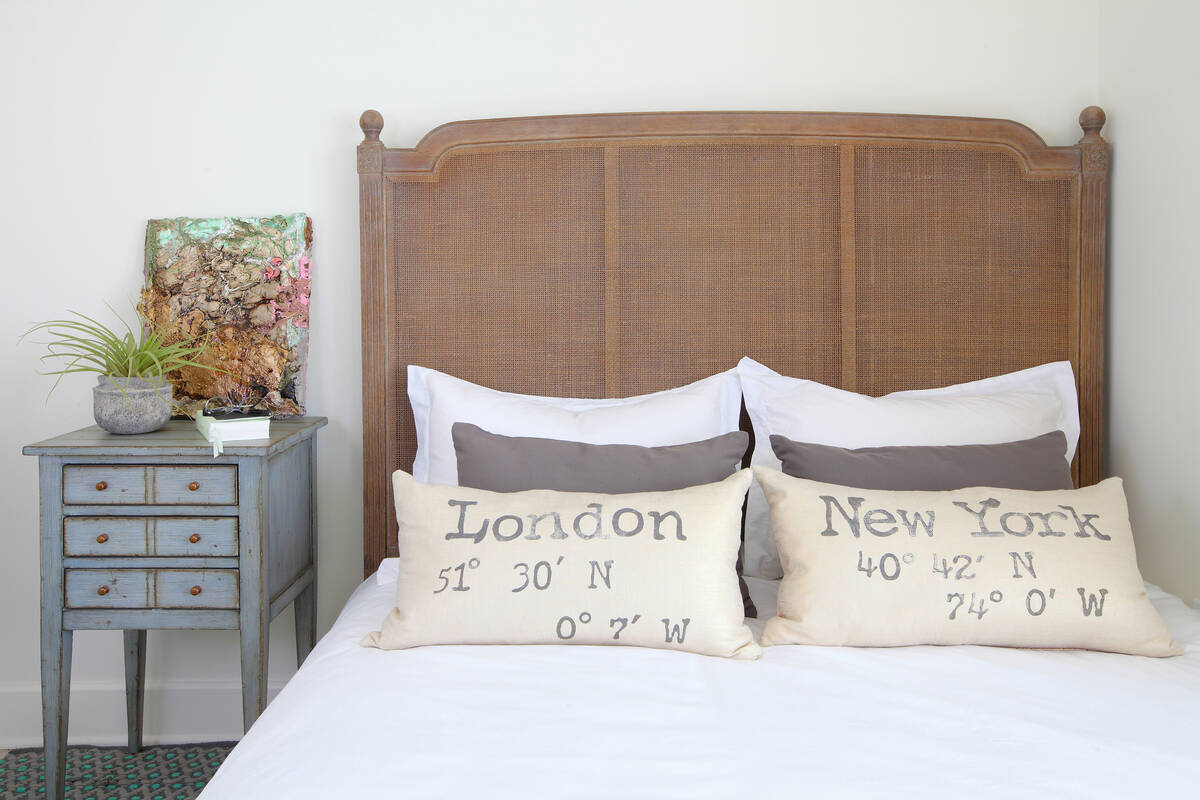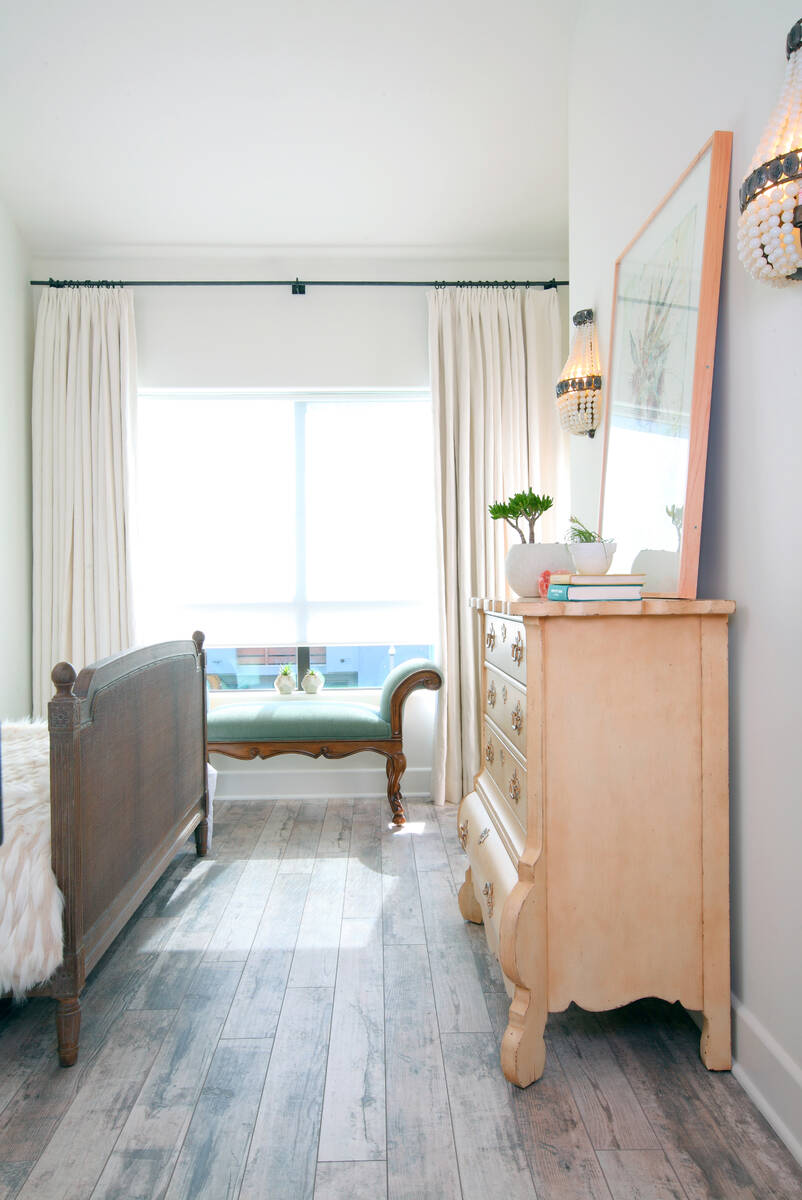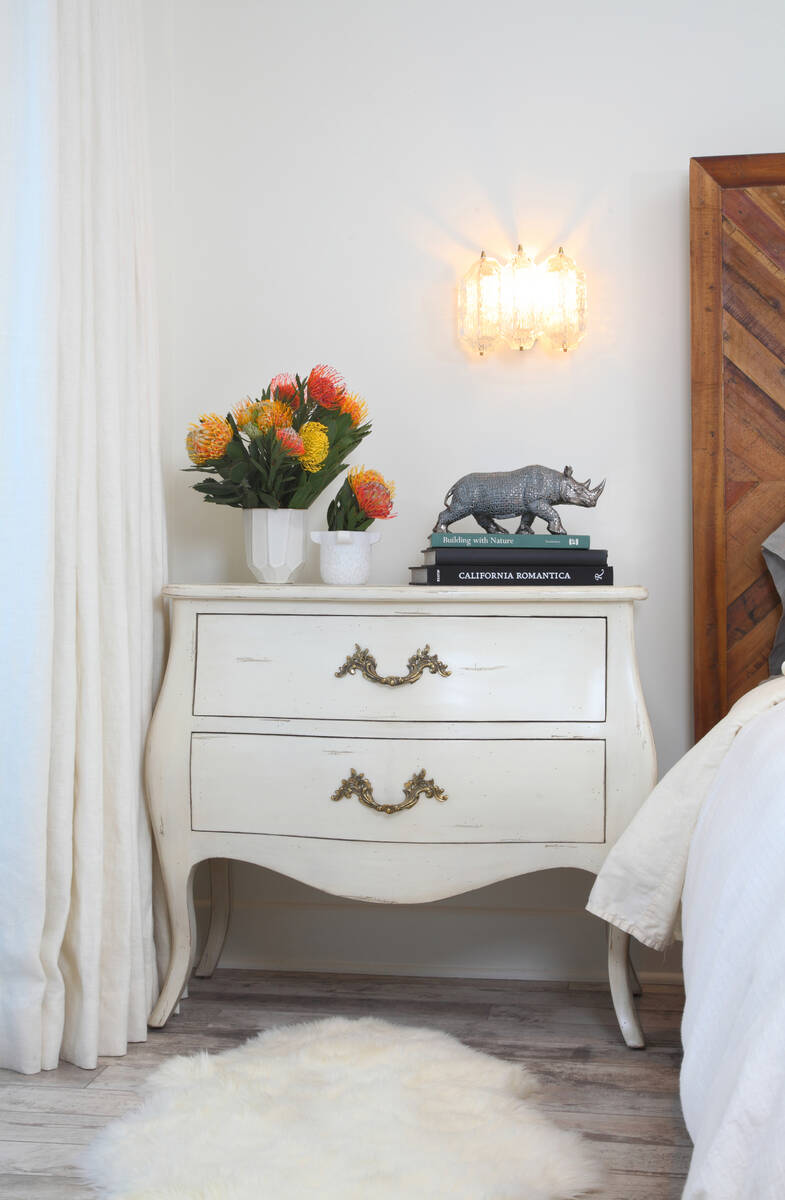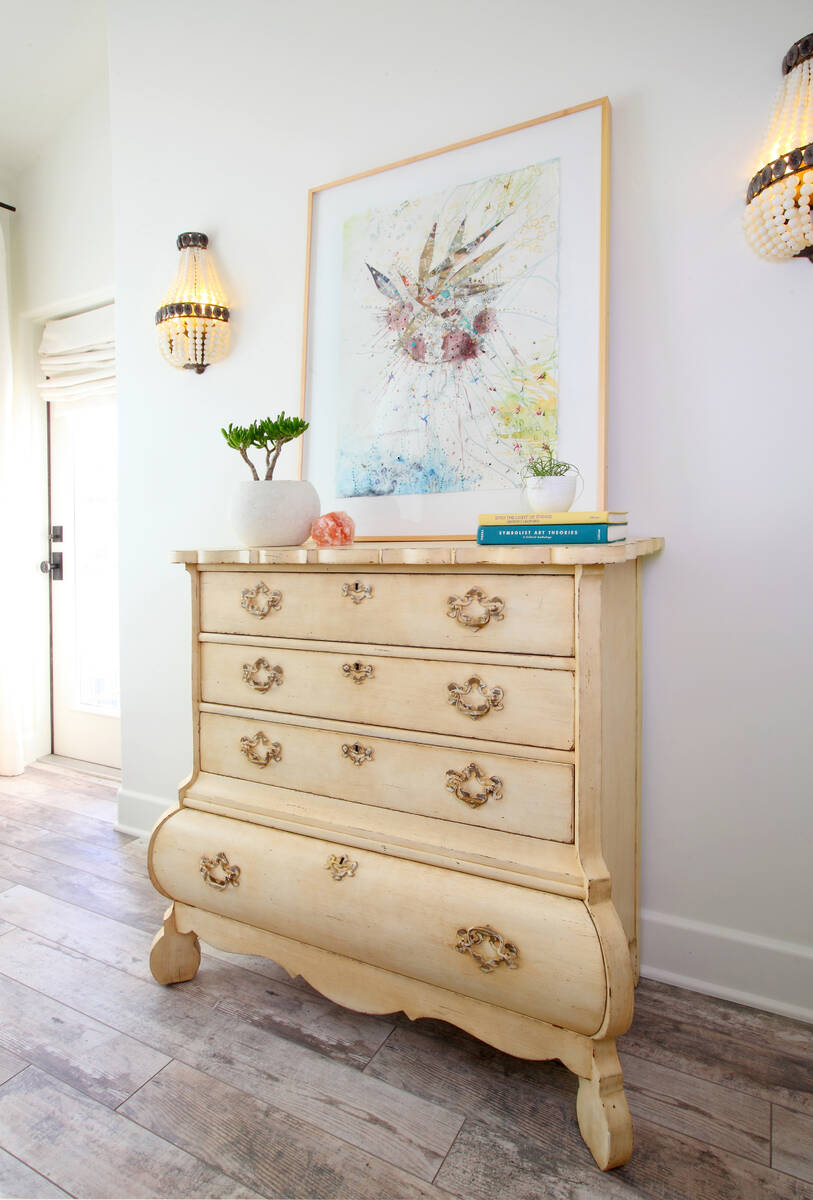Tips for turning master bedroom into a retreat
It’s that time of year when cooler weather invites many of us to curl up on the couch with a book or to watch a show. Some of us may even add more blankets or pillows to the family or living room seating areas to create a warm and cozy vibe in our home.
Your master bedroom can also serve as a great retreat, a sanctuary space, to unwind after a long day. Here are some simple tips from design experts to help you make your master bedroom a great little hideaway for enjoying downtime.
Minimize distractions
The simple act of decluttering will make any space more welcoming, explained Sarah Barnard, an LA-based interior designer who works with clients to create “restorative spaces” in their homes that often connect with art or the environment.
It goes beyond physical clutter, she added, but smoothing out the “visual noise” as well. She suggests sticking with solid colors on walls and minimal prints for “a soothing visual backdrop for sleeping and resting.”
The designer also emphasizes eliminating as much tabletop storage in bedrooms as possible to avoid a chaotic look.
“Having a closed drawer at a bedside table and enough storage to prevent items from accumulating on top of dressers can keep that space free for one or two objects that bring peace, such as a plant or a soothing work of art,” she added.
Pam Clyde, president of Britlin Cleaning, in Austin, Texas, likes to help customers find the right bin and shelving systems to keep rooms organized. That organization is foundational to a space feeling calm and relaxing. After decluttering and organizing, it’s important to create habits to maintain that welcoming look, she tells her clients.
“Making it a habit to put away clothes, shoes and other bedroom clutter daily keeps things under control and will allow your mind to relax and enjoy your space,” she said.
Engaging the senses
Melissa Amos, owner of Parlor 430, a Las Vegas-based interior design firm, says it’s important to pay attention to what engages but relaxes your senses. She emphasized simple changes, not big overhauls, to get that calm, inviting effect.
With the bed, for example, changing to thicker, higher-quality, hypoallergenic fabrics, adding blankets, a duvet or a mattress topper can change the feel of the bed and room. And it’s also important to clean sheets every week.
“These really small changes can change the way you sleep and how you feel in the room, and with keeping the sheets and blankets clean, you remember that fresh feeling when you touch the sheets every night,” she said.
Controlling lighting can also make a big difference in the look and feel of a space. Amos and Barnard both like dimmers to help soften the light in the evening. Amos also says employing secondary lighting like a reading lamp or wall lights can help to create a calming mood in the evening. Pay attention to the brightness of the bulbs you use, too.
“Using warmer temperature lights in reading lamps can also create a more soothing, amber lighting that can help ease into bed,” Barnard said.
Color
Change out bedding and drapery colors with the seasons, Barnard also suggests. Changing the textiles can also help connect our interior to the natural elements that are changing outside.
“In winter, deeper or more saturated colors can feel both cozy and bright during a time when color may be a welcomed boost,” she said. “In summer, light, breezy fabrics feel cool and effortless. Year-round, layered draperies offer the broadest range of options, with heavier curtains helping regulate temperatures and sheers letting in natural light as needed.”
Lisa Lee, chief creative officer at Rituals, a home design studio in Las Vegas, adds color and texture to create a sanctuary space experience by emphasizing “soft and wooly materials” on the bed and furniture.
“We love the addition of sheepskins, faux furs and Sherpa blankets. In our minds, a sanctuary is synonymous with a neutral color palette,” she added. “Winter whites, cream, taupe, bone and mushroom hues all add to a calming vibe.”
You can also change wall colors, Clyde added: “Cool undertones of gray, green, blue and white all look great in a bedroom and make you feel fresh and clean while warm undertones of green, blue, beige or tan give the feeling of warmth and comfort.”
Sound, scent, connecting with nature
To optimize sleep and relaxation in the space, arrange the bed so that it faces natural lighting and views, if possible, Barnard added. If you have a view, arrange the bed so that you can enjoy it during the day to promote a connection to nature.
“In small spaces, facing a window may make the room feel more expansive while you’re resting in bed,” she explained. “In a more metropolitan area with few views of nature, sheer draperies afford some privacy while letting in light. Placing plants by windows can still provide some benefits of enjoying a natural view for a soothing environment.”
Amos also suggests a white noise machine to minimize outside sound and lavender or eucalyptus for a soothing scent in the bedroom. If you have a separate retreat area in your bedroom, Lee will sometimes add floor pillows for lounging or meditating. Amos likes to add a bench at the end of the bed or a chair with an ottoman if space is available.
“Secondary seating is always great. It invites people to enjoy a space longer,” she added. “It all really is about the senses. I’ll tell people to think about that great hotel room they stayed in and had a good night of sleep. What was it that they loved about the space? They’ll usually say it was clean. It was bright during the day and dark at night, those are the things you want.”

























